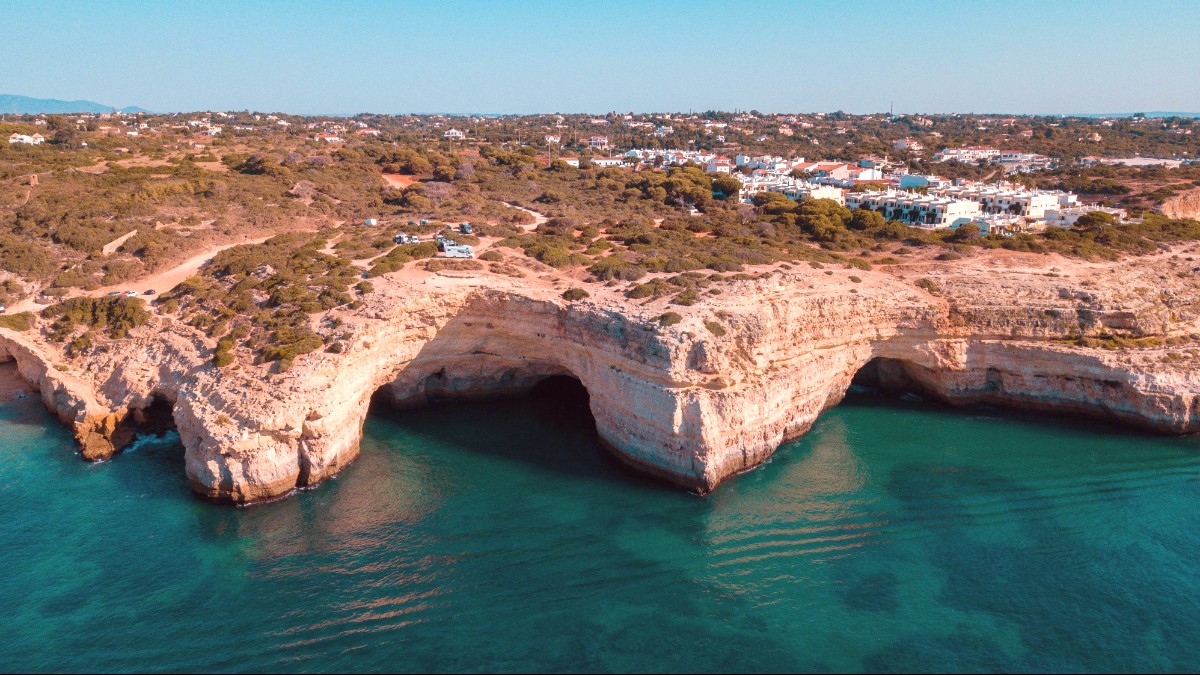
Portugal
Albufeira encourages shedding daily worries and embracing a holiday filled with discovery and joy. Its unique blend of natural beauty and spirited culture means visitors find their perfect pace. For those seeking sun-drenched days and memorable evenings, Albufeira is a destination to explore. Its charm caters to diverse tastes, promising adventures or tranquil retreats.
Albufeira's history goes back to Roman times, where it was called Baltum. The name "Albufeira" comes from the Arabic "Al-buhera," meaning "castle on the sea," a legacy of Moorish rule from the 8th to 13th centuries. Moors advanced irrigation and fortified the town, making it a strongpoint.
After the Reconquista, a powerful earthquake and tsunami in 1755 devastated much of the town. Rebuilding shaped its current layout. In the 20th century, Albufeira transformed from a fishing port to a major tourist destination. The Old Town still shows glimpses of its long history.
The municipality of Albufeira has about 44,000 residents (2021 census). This number grows significantly during peak tourist season, as visitors transform the city into a lively international hub. The permanent residents contribute to the local charm, while the visitor influx creates a dynamic atmosphere. Tourism drives Albufeira's economy. The city focuses on hospitality, entertainment, and beach-related services, making it a powerhouse in the Algarve's travel sector. This industry provides jobs and infrastructure, supporting the city's growth. Businesses, from luxury resorts to local cafes, cater to visitor needs, making tourism the backbone of the community.
Portuguese is the official language. Due to high international tourism, English is widely spoken in all tourist areas: hotels, restaurants, shops, and tour operators. Learning a few basic Portuguese phrases is a thoughtful gesture and can enhance interactions with locals, but you navigate your visit comfortably with English. The official currency of Portugal, and therefore Albufeira, is the Euro (€). Credit and debit cards are widely accepted throughout the city, from large hotels to many smaller shops and restaurants. ATMs are readily available for cash withdrawals. You will manage your finances easily using standard European methods.
Western European Time (WET) in winter (GMT/UTC) and Western European Summer Time (WEST) in summer (GMT+1/UTC+1).
Southern Portugal, Algarve region, Atlantic coast.
Approx. 44,000 (increases significantly with tourists).
Mainly tourism, hospitality, and beach services.
Beautiful beaches, water sports, family resorts, historical sites.
Albufeira is renowned for its beautiful beaches, offering long stretches of golden sand and secluded coves. Water activities are popular, with jet skiing, parasailing, and boat tours available.
The city hosts numerous family resorts, providing amenities and activities for all ages.
Its location offers access to other natural attractions and historical sites across the Algarve, making it a versatile destination.
Albufeira has a deep history, predating its modern tourist status. Originally a small fishing village, its roots trace back to Roman times. The Romans, who called it Baltum, established a settlement here, recognizing the area's strategic coastal position. Evidence of their presence, including pottery fragments and building foundations, occasionally appear during excavations.
The city's name, "Albufeira," comes from the Arabic "Al-buhera," meaning "castle on the sea" or "lagoon." This name shows the profound influence of the Moors, who occupied the region from the 8th to 13th centuries. Under Moorish rule, Albufeira flourished. They introduced advanced irrigation techniques, enhancing agriculture, and strengthened the town's defenses. The castle, perched above the town, served as a strongpoint.
Moors introduced advanced irrigation techniques, boosting agriculture.
The castle served as a strongpoint, enhancing defenses.
Albufeira fell to Christian forces in 1249, one of the last Moorish strongholds.
Following the Reconquista, Albufeira continued as a fishing and agricultural community. Its port remained active, supporting local trade.